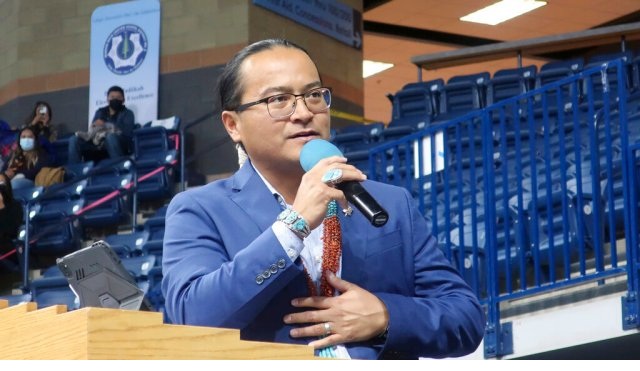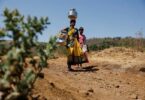Rachel Frazin
This week’s Supreme Court decision stating that the U.S. does not have to secure water for the Navajo Nation denies help to a community that struggles with water access, experts and advocates say.
The high court ruled Thursday that the U.S. does not have to take “affirmative steps” to secure water for the tribe under an 1868 peace treaty.
“It makes it harder for us to secure our water rights,” Navajo Nation President Buu Nygren told The Hill. “It doesn’t say that we’re not going to get any. … [It just] puts up barriers for us.”
Many of the Navajo Nation reservation’s approximately 170,000 residents do not have access to a water system.
The Navajo Nation’s Department of Water Resources says that about 30 percent of the population of Navajo Nation does not have access to clean, reliable drinking water, and the U.S. Environmental Protection Agency’s website says that about 15 percent don’t have access to piped water at their homes.
While many of the issues stem from a lack of infrastructure rather than a lack of water itself, some say that a more favorable decision from the court could have helped the tribe as it seeks to address the issue.
Heather Tanana, an assistant professor at the University of Utah’s College of Law, noted that the federal government has “a lot of expertise,” including engineers and watershed planners.
“That expertise that the federal government has — they could have come in and helped the nation identify, what are their water sources that are available, what are the quality issues,” Tanana said.
Without that assistance, Tanana said, it will be more difficult for the tribe to take advantage of federal infrastructure funding.
Sarah Porter, director of the Kyl Center for Water Policy at Arizona State University, similarly said that having more clarity on water rights would be a “big step forward.”
“Once a tribe knows how much water they have a right to, then they are able to take other actions like seek funding for the infrastructure,” Porter said.
Asked to comment, an Interior Department spokesperson said the department is “committed to upholding its trust and treaty obligations to Tribes, as well as to ensuring that water rights for Colorado River users are fulfilled according to the law.“
The federal government does have some projects aimed at bolstering Navajo water access.
Nygren said that in addition to the infrastructure issues, he also believes that the tribe itself currently does not have enough water.
“I don’t think we have enough water at this moment, because people still haul water. They’ll haul water from border towns. They’re drinking out of windmills which [are] supposed to be for livestock,” Nygren said.
“As our population continues to grow and develop, we’re not going to have that water that’s needed to sustain our nation,” he added.
Similarly, a court brief from advocacy group DigDeep and the Utah Tribal Relief Foundation says that many families are forced to “purchase bottled water, haul water long distances, or use contaminated water to meet their basic needs.”
The brief, on which Tanana was one of the lawyers representing the groups, also stated that some individuals were getting by with just two or three gallons of water per day, while the average American uses 88 gallons.
“For some families, that’s deciding between whether or not they can use water in a health emergency or use water to make their dinner or … their kid not being able to go to soccer practice because they don’t have enough water to take a shower afterwards,” said Kabir Thatte, DigDeep’s director of policy and coalitions.
Porter said the court’s decision now leaves the Navajo to pursue their water rights claims through an adjudication process.
“It’s these big judicial proceedings, where all of the tribal claims are in with all of the other water rights claims … that are asserted in watershed,” she said.
Courtesy: thehill







